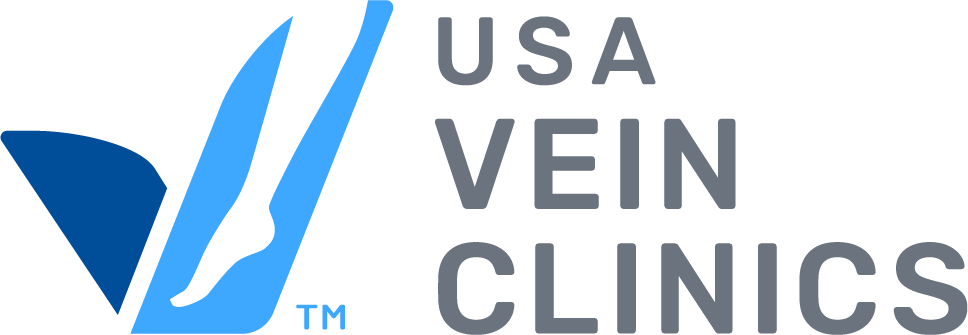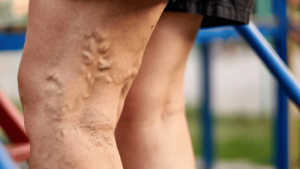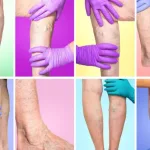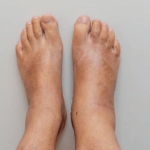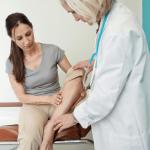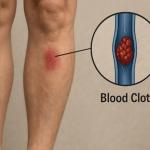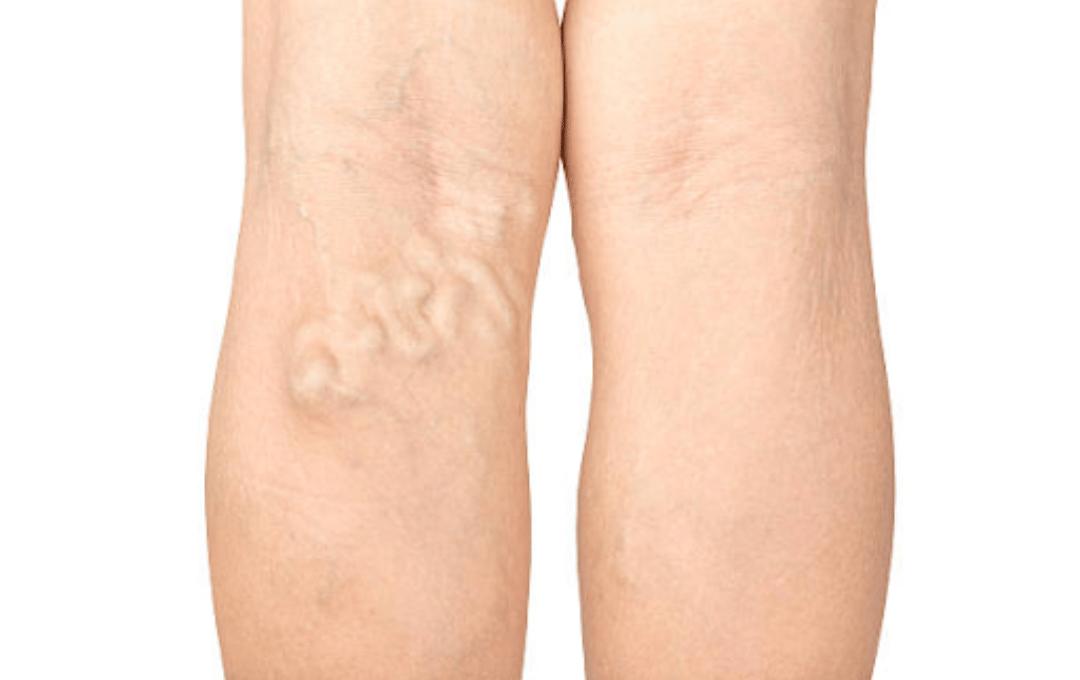
Every year, up to 300 thousand people die from blood clots.¹ Several factors can increase your risk of blood clots, including injuries, genetic disorders, and varicose veins. There are also different types of blood clots, depending on where they’re located.
One type of blood clot that can happen in people with varicose veins is deep vein thrombosis (DVT). DVT usually forms in the leg and can lead to serious complications if it’s not detected and treated early.
Learn about the early warning signs of DVT and how this condition develops. USA Vein Clinics wants to help you keep your veins healthier by providing tips to prevent blood clots like DVT from forming in the first place.
5 Questions to Evaluate Vein Health
Why Early Detection for Deep Vein Thrombosis (DVT) Matters
A blood clot in a deep vein can be very dangerous. If the clot breaks loose and travels to the blood vessels in the lungs, it can form a blockage, which is known as a pulmonary embolism.
A pulmonary embolism can damage lung tissue, lead to lower oxygen levels in the blood, and harm other organs. Blocked blood flow in the lungs can also impact the heart, possibly leading to cardiac arrest.
A pulmonary embolism is a serious medical emergency that requires immediate treatment. About one-third of people with a pulmonary embolism die before they can get timely treatment.²
Not everyone with DVT will experience early symptoms to help prevent a pulmonary embolism. About 30% to 40% of cases go unnoticed until a serious complication occurs.³
However, there are a few early-stage warning signs that can indicate deep vein thrombosis. If you’re experiencing symptoms of DVT, especially if only one leg is affected, seek medical attention from a vein specialist. The experts at USA Vein Clinics are here to help you with a proper diagnosis and personalized care.
Schedule Your Consultation Online
8 Deep Vein Thrombosis Early Symptoms
Knowing the symptoms of the early stages of deep vein thrombosis can help you keep yourself safe. Seek medical attention from a vein specialist if you are experiencing the symptoms listed below, especially if only one side of the body is affected:
1. Unexplained Leg Cramping
Leg cramps, especially in the calf muscle, are common. Legs can cramp because of slow circulation, dehydration, and overused muscles.
A blood clot in a vein can also cause a leg cramp by inhibiting blood flow, stopping the oxygen in the blood from reaching the muscle tissue. You can tell if a clot is causing leg cramping because the pain won’t go away with stretching or walking. It’s also usually worse in the morning and may improve after getting out of bed for the day.
2. Swelling in the Leg
DVT can lead to swelling where the clot has formed, or the entire limb can be affected. If the clot is in the leg, the swelling is usually below the knee. Swelling from DVT occurs when the blockage in the vein causes fluid to build up.
3. Pain or Tightness
A sharp pain or tightness can also be an early warning sign that a clot has formed. Tightness is the result of pressure building up from blocked blood flow.
4. Redness
Seeing a red patch or a long, thin red area, especially if there are other early signs of deep vein thrombosis, could indicate a clot. The redness is caused by inflammation of the affected vein.
5. Skin That’s Tender to the Touch
The increased pressure on the vein from a blockage can cause inflammation in the vein and the surrounding tissue. This can make the area near where the clot formed feel tender.
6. Warmth in the Affected Area
If one area of the skin feels warmer than the surrounding area, it could indicate early deep vein thrombosis. The warmth is caused by blood collecting behind the blockage and raising the skin’s temperature.
7. Swollen Veins
Swollen, twisted veins in the legs are varicose veins. They are caused by venous insufficiency, where blood backs up because of damaged vein valves. However, a clot can also cause veins to swell. Vein swelling is also one of the very early signs of deep vein thrombosis, followed by limb swelling.
8. Feelings of Heaviness in the Leg
Legs that suddenly start feeling heavy or fatigued are signs that blood flow has slowed. This could be because of DVT or because of chronic venous insufficiency.
If you notice signs of the early stages of deep vein thrombosis, schedule a consultation with a vein doctor at USA Vein Clinics to evaluate your veins and look for signs of DVT or damage affecting a deep vein.
Relief is a Click Away – Book a Consultation Now
How to Treat and Prevent DVT
Deep vein thrombosis detected early can be treated with blood-thinning medications, also known as anticoagulants. These medications alter protein in the blood to stop clots from growing, allowing the body to break down the clot slowly.
A vein specialist can also recommend the following lifestyle changes to help prevent future blood clots:
- Avoid being sedentary: If you sit or stand for hours at a time or travel frequently, getting up to walk around or stretch every hour can help prevent blood clots from forming.
- Get regular exercise: Exercise improves blood circulation and helps to keep veins healthy.
- Drink plenty of fluids: Drinking water can keep your blood flowing freely and prevent it from becoming sticky and sluggish, which can lead to clot formation.
- Maintaining a healthy weight: Staying healthy can help prevent issues with high blood pressure, slow circulation, and vein damage.
Your risk of developing a blood clot is influenced by the health of your veins. Regular vein health check-ups are a great way to identify an increased risk for DVT and receive a personalized treatment plan.
Diseased or damaged veins can cause blood to pool and lead to poor circulation, varicose veins, and an increased risk of DVT. A vein specialist can examine deep veins in the legs using ultrasound imaging, helping to spot damage early on. They can also treat damaged veins, helping to prevent DVT.
Stay on Top of Your Vein Health with USA Vein Clinics
USA Vein Clinics is a nationwide network of vein treatment centers that provides minimally invasive procedures for venous insufficiency, which is the root cause of varicose veins and a major DVT risk factor. Schedule an appointment with a vein expert at a clinic near you.
FAQs
How many people in the United States die from a blood clot each year?
Every year, between 100,000 and 300,000 people in the U.S. die from a blood clot. In other words, someone dies from a blood clot every six minutes.¹
Can deep vein thrombosis be prevented?
Deep vein thrombosis is preventable. Avoiding a sedentary lifestyle, smoking, and being overweight can help lower your risk of DVT. It’s also important to have regular vein health screenings. A vein specialist can detect damaged veins and resolve them with non-surgical vein treatments.
Are varicose veins an early warning sign of deep vein thrombosis?
People with varicose veins are at a higher risk of DVT than those with healthy veins. If you have varicose veins or are concerned about blood clots, schedule a consultation with a vein specialist at USA Vein Clinics. Our doctors can treat varicose veins with a minimally invasive procedure, helping to prevent DVT.
Call Us For Additional Questions
Sources
- National Blood Clot Alliance, “Blood clots in the united states,” https://www.stoptheclot.org/blood-clot-information/blood-clots-in-the-united-states/
- Vrinda Vyas, Abdulghani Sankari, & Amandeep Goyal, “Acute pulmonary embolism,” in: StatPearls [Internet], StatPearls Publishing, https://www.ncbi.nlm.nih.gov/books/NBK560551/
- National Institutes of Health, “How to spot and prevent deep vein thrombosis,” News in Health, https://newsinhealth.nih.gov/2017/01/how-spot-prevent-deep-vein-thrombosis
